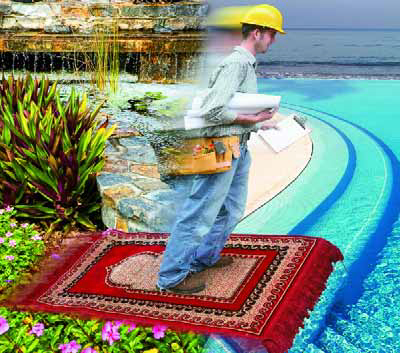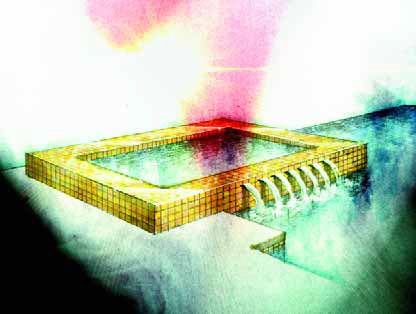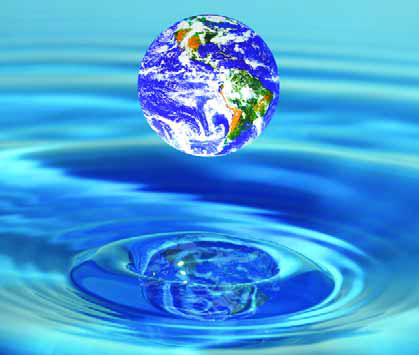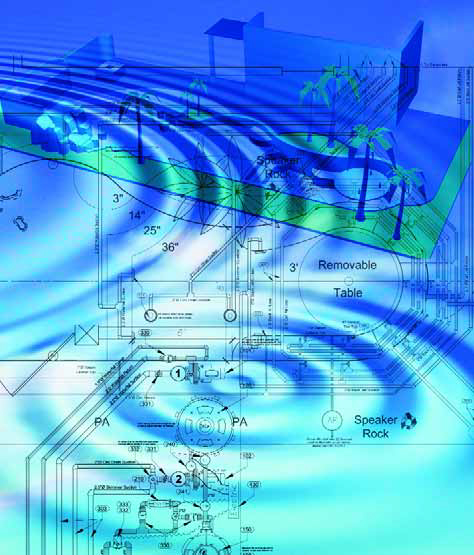Professional Watershaping
It may be a cliché, but I think there's something to be said for the notion that you need to know where you've been to see where you're going: The present and the future are always both a result of (and a response to) the past. For years, voices in this magazine have described, defined and advocated changes in the way the watershaping industry works. I, for one, have written volumes on what the pool and spa industry was once like and how the benefits of elevating our approaches flow to everyone from suppliers, designers and contractors to consumers as well. I've also meditated more than once on how professionals on the
It may be a cliché, but I think there's something to be said for the notion that you need to know where you've been to see where you're going: The present and the future are always both a result of (and a response to) the past. For years, voices in this magazine have described, defined and advocated changes in the way the watershaping industry works. I, for one, have written volumes on what the pool and spa industry was once like and how the benefits of elevating our approaches flow to everyone from suppliers, designers and contractors to consumers as well. I've also meditated more than once on how professionals on the
Last time, I described (at great length, as you may have noticed) what happens in the time between my initial phone conversation with clients and a point just ahead of my formal presentation of a design. It's an involved process that uses all of the information I've gleaned from my clients about what they want, what they think they need and what they ultimately expect to have in their backyard environments. It's about understanding the underlying circumstances, deciding what should be done and, finally, assembling all of that insight into a
Last time, I described (at great length, as you may have noticed) what happens in the time between my initial phone conversation with clients and a point just ahead of my formal presentation of a design. It's an involved process that uses all of the information I've gleaned from my clients about what they want, what they think they need and what they ultimately expect to have in their backyard environments. It's about understanding the underlying circumstances, deciding what should be done and, finally, assembling all of that insight into a
Whether you call yourself an environmentalist or not, the current information about climate change and a range of related issues is something you need to consider. Before you react to that statement, be advised that you don't have to accept global warming as fact or anything else experts and scientists might say at face value. What you do have to accept, however, is that there's enough going on in those arenas that your clients are picking up on it - and personally, that's more than enough motivation for me to start paying attention sooner rather than later. In other words, as both enlightened citizens and forward-thinking watershapers, I think things are at a point where it's probably wise to
Whether you call yourself an environmentalist or not, the current information about climate change and a range of related issues is something you need to consider. Before you react to that statement, be advised that you don't have to accept global warming as fact or anything else experts and scientists might say at face value. What you do have to accept, however, is that there's enough going on in those arenas that your clients are picking up on it - and personally, that's more than enough motivation for me to start paying attention sooner rather than later. In other words, as both enlightened citizens and forward-thinking watershapers, I think things are at a point where it's probably wise to
Why isn't the appropriate use of water a defining, central component in the education of landscape architects? That question has rattled around in my head for a long, long time, basically because it has no adequate or satisfactory answer. I'm a trained landscape architect and, as luck would have it, for nearly 20 years I've had one foot in the pool industry and the other in landscape architecture - and I've always felt like a rare beast moving back and forth between two entirely separate worlds. As I see it, this lack of affinity between these water-related industries has been a limiting factor in the advancement of the watershaping trades. For me, the lack of connection has always seemed nonsensical when it hasn't seemed tragic. As a watershaper, a big part of my work in recent years has been seeking ways to combine the best of both worlds and share what I know with university-level students in landscape architecture departments - students whose chairs I occupied some years ago and who still stand a good chance of graduating without ever having been taught anything at all about how water can
Why isn't the appropriate use of water a defining, central component in the education of landscape architects? That question has rattled around in my head for a long, long time, basically because it has no adequate or satisfactory answer. I'm a trained landscape architect and, as luck would have it, for nearly 20 years I've had one foot in the pool industry and the other in landscape architecture - and I've always felt like a rare beast moving back and forth between two entirely separate worlds. As I see it, this lack of affinity between these water-related industries has been a limiting factor in the advancement of the watershaping trades. For me, the lack of connection has always seemed nonsensical when it hasn't seemed tragic. As a watershaper, a big part of my work in recent years has been seeking ways to combine the best of both worlds and share what I know with university-level students in landscape architecture departments - students whose chairs I occupied some years ago and who still stand a good chance of graduating without ever having been taught anything at all about how water can
When I sit down with clients for our first face-to-face meeting, we discuss a range of issues that will guide me when I return to my studio and get down to designing a watershape and surrounding areas for them. We'll talk about colors, materials, the location of the pool, their preferences in art, the way they entertain and, perhaps most important of all, how they plan to use their backyard and swimming pool. Let's focus on that last point: When we talk about how a pool is going to be used, what I really want to know is how it will be used on a daily or weekly basis (for swimming, exercise, play or simply as a visual), not how it's going to be used once or twice each year when they throw a big pool party. My thought is that these clients will
When I sit down with clients for our first face-to-face meeting, we discuss a range of issues that will guide me when I return to my studio and get down to designing a watershape and surrounding areas for them. We'll talk about colors, materials, the location of the pool, their preferences in art, the way they entertain and, perhaps most important of all, how they plan to use their backyard and swimming pool. Let's focus on that last point: When we talk about how a pool is going to be used, what I really want to know is how it will be used on a daily or weekly basis (for swimming, exercise, play or simply as a visual), not how it's going to be used once or twice each year when they throw a big pool party. My thought is that these clients will

















